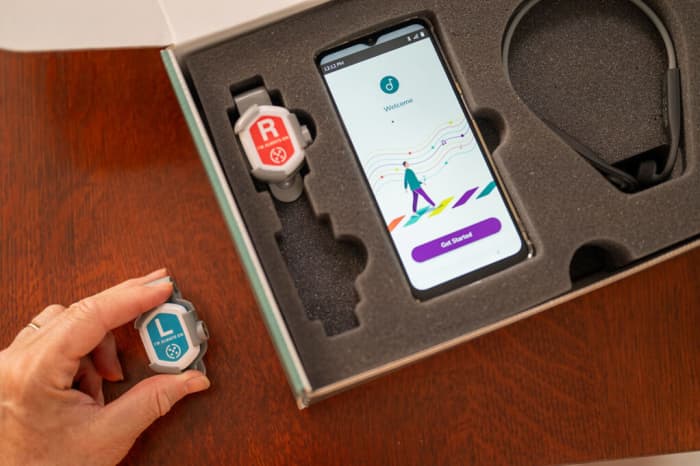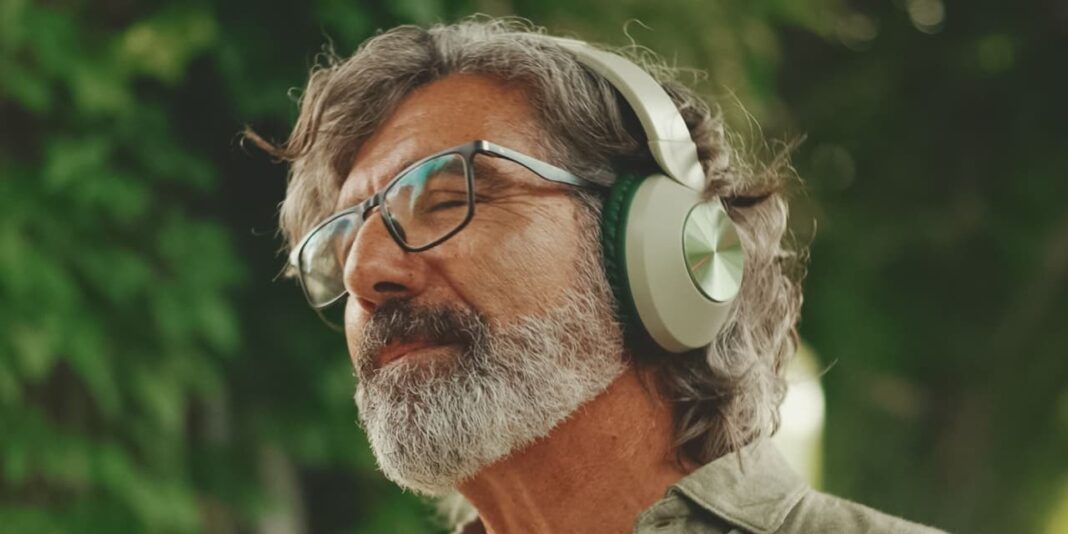As a board-certified music therapist, Brian Harris knows firsthand the power of music to treat patients and transform care.
He served as the first music therapist at Spaulding Rehabilitation Hospital in Boston, the teaching hospital for Harvard Medical School’s department of physical medicine and rehabilitation. In building the music-therapy program there, Harris worked closely with stroke and brain-injury patients.
“With music therapy, patients got better faster,” Harris said.
But the demand for services from physicians and families looking for more help, especially for patients living at home, was overwhelming, he said, adding, “How to we get from Harvard to the world?”
That’s the idea and mission behind MedRhythms Inc., a neurotherapeutics company based in Portland, Maine. Harris is the company’s chief executive and co-founder.
MedRhythms’ first product, InTandem, uses music to help restore a stronger walking gait in stroke patients with chronic reduced mobility. InTandem is approved as a Class II medical device by the U.S. Food and Drug Administration and is available by prescription.
“For patients with difficulty producing rhythmic movements, like those with walking difficulty after stroke, the InTandem system can help reduce that difficulty, both immediately and in the long term,” said Lou Awad, a physical therapist and rehabilitation scientist and the founding director of Boston University’s Neuromotor Recovery Laboratory.
“The cumulative research on InTandem has shown immediate improvements in gait and walking speed after a single session, and long-term improvements in multiple walking outcomes,” Awad said. “InTandem helps patients walk faster while preserving, and sometimes improving, the quality of their gait.”
In a clinical study involving eight leading U.S. rehabilitation hospitals and research institutions, the technology has been shown to produce an improvement in gait speed.
Every 40 seconds, someone in the U.S. has a stroke, according to the Centers for Disease Control and Prevention. About three-quarters of strokes occur in adults 65 or older, and more than half of older adult stroke survivors have subsequent mobility issues, the CDC says.
Currently, almost four million people in the U.S. have a walking deficit related to a stroke, Harris said.
Not all of those people are candidates for InTandem, however, because people need to have some level of ability to walk in order to use the device, Harris said.
The total financial impact of strokes in the U.S. topped $56 billion between 2018 and 2019. That figure includes the cost of healthcare services, medicines and missed days of work, the CDC said.
MedRhythms is also developing products to address a range of other neurological conditions, including multiple sclerosis and Parkinson’s disease. It has entered into a licensing agreement with Biogen
BIIB,
for the multiple sclerosis treatment.
The power of music has long been used to help with medical conditions such as anxiety, depression, chronic pain, developmental disorders, autism and dementia. The idea that music can affect health and behavior goes back to the writings of Aristotle and Plato, according to the American Music Therapy Association.
Music therapy gained traction after the first and second world wars, when improved mood and functioning were seen in soldiers with traumatic brain injuries and emotional strain when they listened to music, the industry association said. In 1944, Michigan State University launched the first degree program in music therapy.
How it works
InTandem incorporates sensors worn in shoes, a headset and a touch-screen device loaded with proprietary software.
It is based on the principles of rhythmic auditory stimulation, which aims to synchronize motor movement with a cue, such as music. The device is designed to be used independently by a patient at home.

InTandem uses sensors on the shoes, a headset and a touch screen.
MedRhythms
As the patient listens to music, the goal is for them to walk to a beat determined by the software to stimulate progress. The sensors measure and track the patient’s walking stride and adjust the tempo of the music, working toward a clinical goal, so that the patient can learn to walk faster and more easily.
Awad explained that any time a person moves, part of how they control that movement is planned in advance. The InTandem system affects this preplanned portion of motor control by harnessing a unique human biological process called auditory-motor entrainment.
“Auditory-motor entrainment is what causes us to move in synchrony with a rhythmic beat without having to think much about it. When we hear a rhythmic beat, areas of our brain naturally begin to process its structure: the duration of the beats and the time between beats. From this, the brain predicts the timing of the beats that follow,” Awad said. “Because the areas of the brain that allow us to perceive a rhythmic beat are also involved in the production of rhythmic movement, it is thought that this prediction is readily used by the motor system to help us produce rhythmic movements, like walking.”
MedRhythms has a partnership with Universal Music Group
UMG,
UNVGY,
to use its catalog of artists and music for InTandem. The partnership with Universal, the largest family of record labels in the world, gives users a wide choice of genres and artists, Harris said.
“Objectively, the music has to have a certain time signature or beat or groove. But once it’s checked those boxes, the choice is subjective,” Harris said.
“Music that you like enhances the brain more and activates the brain more,” he said. “Whether you’re into Stevie Wonder or Taylor Swift, we’ve got you covered. There’s Queen. Frank Sinatra. Any genre you can think of. There’s so much content.”
Harris declined to comment on the cost of the system or whether any insurance companies cover it, or on the company’s financials.
MedRhythms, which is privately held, has raised about $57 million in financing since launching in 2015, according to media reports.
“We’re a mission-driven organization. Profitability is a goal, though,” Harris said. “We’re building the company to be a standalone company. We’re not building to merge or flip or get acquired.”
